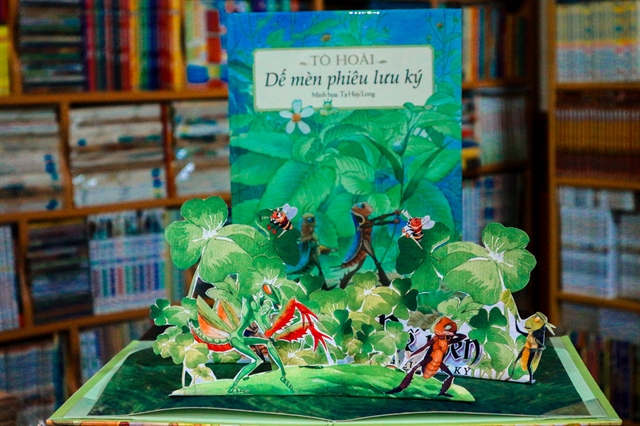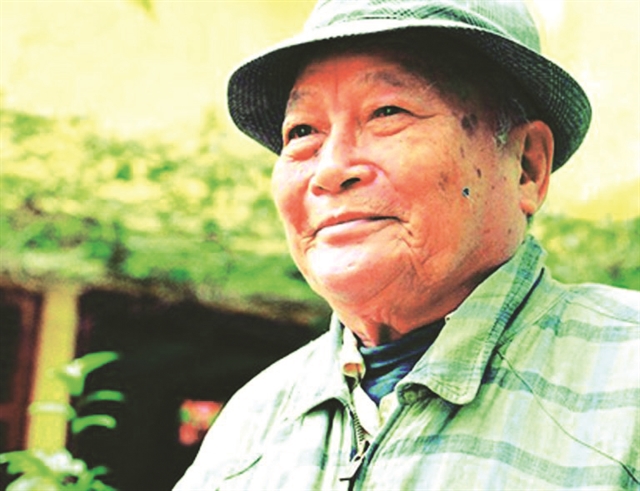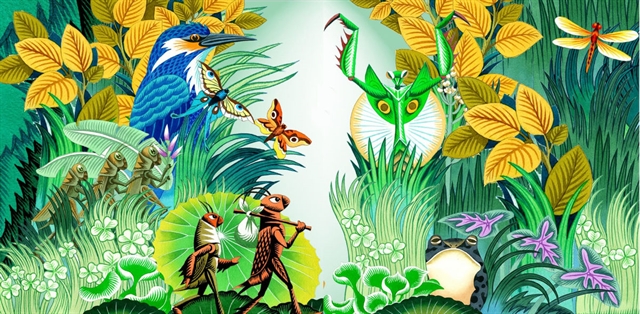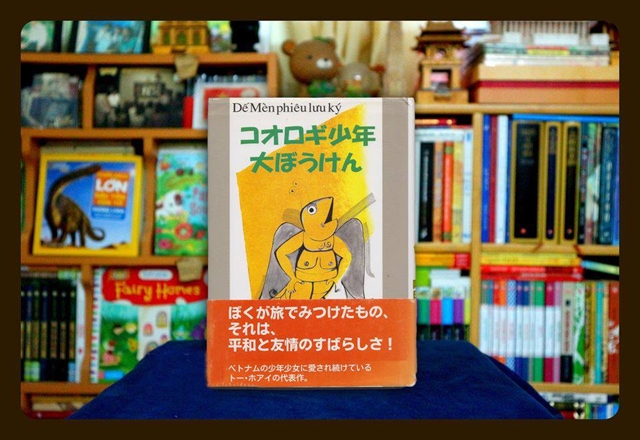 Features
Features

For Hà Nội book collector Lê Hải Đoàn, Dế Mèn Phiêu Lưu Ký (Diary of a Cricket) is a special book that has helped him make friends with others around the world who feel the same way.
By Ngô Minh

|
| PLACED TOGETHER: Images of Diary of a Cricket, collected by Lê Hải Đoàn. Photo courtesy of himself |
For Hà Nội book collector Lê Hải Đoàn, Dế Mèn Phiêu Lưu Ký (Diary of a Cricket) is a special book that has helped him make friends with others around the world who feel the same way.
In collecting different versions, Đoàn vaguely feels like the main character in the book, Cricket, who undertook a worldwide adventure to make friends and to call on other species to unite for a peaceful world. Love of author Tô Hoài’s (1920-2014) book helped Đoàn learn more about the world when he tried to locate different versions in different languages.
With more than 40 languages now covered, Diary of a Cricket is the most translated of all Vietnamese books. The story tells of Cricket’s travels to discover the world, just as the book itself has done, appearing in Thailand, Japan, China, South Korea, Germany, Romania, France, Slovakia, and elsewhere.

|
| TELLER OF TALES: A portrait of Tô Hoài. |
Legacy
Tô Hoài was born Nguyễn Sen into a craft family in Thanh Oai District in what was then Hà Đông Province but is now Hà Đông District in Hà Nội. He held a number of jobs before focusing on writing in the 1940s. He was awarded the Hồ Chí Minh Prize for Literature, the most noble prize in the field, in 2006.
Diary of a Cricket describes the adventures of a cricket, a metaphor for humans, and is Tô Hoài most famous work, which he wrote at the tender age of 17.
He has left a giant legacy in Vietnamese literature, with folk tales, novels, and short stories, many of which are on school reading lists.

|
| WORDS & PICTURES: Illustration of Diary of a Cricket by Tạ Huy Long. Photo courtesy of the Kim Đồng Publishing House |
The Kim Đồng Publishing House has hosted activities in recent times to mark his 100th birthday. The writer handed over the copyright for more than 200 titles to the children's publishers.
It has released various versions of Diary of a Cricket, one of the most popular stories among Vietnamese children and the most widely read from generation to generation.
This is the first time readers have had the chance to see the book in different languages and with illustrations from famous artists like Ngô Xuân Khôi, Tạ Huy Long, Đậu Thị Ngọc Vinh, and Thành Chương.
A copy hand-written by Tô Hoài was also introduced for the first time.
His other famous works, like Truyện Tây Bắc (Stories from the Northwestern Region), Tự Truyện (My Own Story), O Chuột (Hunting Mice), Nhà Nghèo (Poor Family), and Ba Người Khác (Three Others), have been reprinted.

|
| POSES: Different portraits of Tô Hoài taken by Nguyễn Đình Toán, on display at the Kim Đồng Publishing House. VNS Photo Minh Thu |
Nguyễn Đăng Điệp, deputy director of the Literature Institute, said Tô Hoài’s works contain both humane and social values.
“He’s an author for children, adults, and people from all walks of life,” he said. “He told stories of ordinary lives, Hà Nội stories, his own tales, and of changes in society, all with a tolerant and honest heart.”
He added that Tô Hoài’s language is diverse, rich, and profound. Perhaps this is why many extracts from his books are cited at primary and secondary schools to enrich students’ vocabulary and language skills.
“His words are rich in imagery, his sentences lively,” Điệp said. “I believe that writing and writing again gave Tô Hoài stature. He wrote tirelessly, professionally, and carefully.”
“For him, writing was like morning exercise or breathing. He wrote anytime, anywhere, on a business trip, during a break in a meeting, or even in a hospital bed.”

|
| UNIVERSAL APPEAL: A Japanese version of Diary of a Cricket, translated by Maki Okada and illustrated by Thành Chương. Photo courtesy of the Kim Đồng Publishing House |
Inspiration
The cricket in Tô Hoài’s book inspired the awards launched by the Thể Thao & Văn Hóa (Sports & Culture) newspaper to honour works dedicated to children.
Entitled Dế Mèn (Cricket), the annual non-profit awards are presented to excellent compositions, art performances, and entertainment programmes created for children.
They include one grand prize, called “Cricket Knight”, and several others called “Cricket Desire”.
The Grand Prize this year went to renowned writer Nguyễn Nhật Ánh for his book Làm Bạn Với Bầu Trời (Being Friends with the Sky).

|
| REACHING MORE READERS: An English version of Diary of A Cricket. |
Nguyễn Quang Thiều, chairman of the judging panel, expects the awards will inspire other authors to write for children.
“I want to call upon writers and poets to write for little readers,” he said. “In any period of 10 years, you should spend a third or a quarter writing something for children.
“Not something big. Just write about your own children or grandchildren, with heart and honesty. Don’t teach, don’t judge, don’t ask them to do something; just let them know you understand them and want to play with them.”
Vinh was the first female artist to illustrate Diary of a Cricket. “I drew the illustrations for my university dissertation,” she explained.
“Over the course of seven years, I completed more than a hundred illustrations, which I think give a new look to an old story.
“This is the first time I have drawn animals. I read the story when I was young, and loved it very much.”
The artist uses watercolours for the characters and, for the first time by anyone, depicts them in a modern style. There can be no doubt that Tô Hoài inspired readers and other writers and artists to live and work with meaning.
Collecting different versions of Diary of a Cricket has become a hobby of many book lovers, finding the story in different languages or in Vietnamese versions illustrated by different artists.
Book collector Đoàn found a Vietnamese man living in Slovakia in a Vietnamese community forum, with whom he shared the hobby of reading and collecting books.
The 60-year-old hasn’t met Đoàn yet, but has enthusiastically helped him find a version of Cricket published in 1982 in Slovakian. He has also visited many old bookshops to find other copies of the book. By chance, he visited Dr Ján Mucka, who had translated the book from Vietnamese into Slovakian.
“He helped me contact the translator, Mucka, and I was happy to have the chance to get to know him,” Đoàn said. “It’s interesting, isn’t it?”
Đoàn also owns a few rare versions in Romanian and Russian. He loves comparing the differences in the way artists from different cultures depict Cricket in the illustrations.
“No matter where Cricket goes, he’s loved by everyone, and that exactly what’s described in the story,” Đoàn said. VNS




